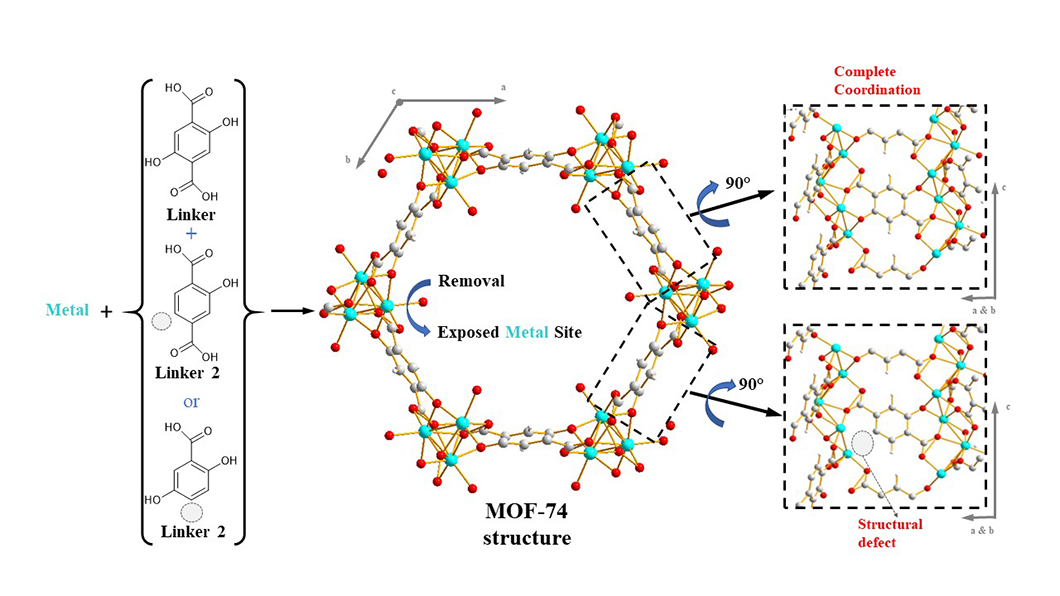
Generation of structural defects in a MOF-74 structure with Exposed Metal Sites by partial linker substitution
Source: BAM Department Analytical Chemistry; Reference Materials, BAM Division Prozess Analytical Technology, BAM Division Glass and Jose A. Villajos, ENSCL, Lille, France
Metal-organic framework materials (MOFs) are highly crystalline and porous molecular networks made by linking metallic atoms with organic molecules. The wide variety of possible components of MOFs yields thousands of possible structures and chemical functionalities that could be useful for facing current problems in industry or society. Examples are the separation of gas-mixtures difficult to separate by conventional methods, the selective catalysis that reduces the production of wastes, the capture of post-combustion green-house effect gases, or the storage of energetic substances like natural gas or hydrogen.
Metals in MOFs are surrounded by atoms from the organic linkers in different positions constituting clusters with different geometries. For certain MOFs, some positions in these clusters are not occupied by atoms from organic molecules, but for molecules from the synthesis. The activation of these materials involves the removal of all the guest molecules in the pores, creating exposed sites in these metallic positions. In the exposed metal sites, the interactions with guest molecules are stronger, which is useful for the application, but make them difficult to activate.
In this work, we partially substitute the organic linker of one of the MOFs with the highest concentration of exposed metal sites, called MOF-74, by other linkers with similar size and shape, but with one less linking position. The resulting crystals lowered their structural stability as long as the substitution degree of the linker was higher because of the increase of open metallic positions. For those materials still stable, we confirmed an easier removal of solvents from the Open Metal Sites by heating, or an easier substitution of the molecules in the Open Metal Sites by others. For defective structures, a lower temperature was necessary for removal of guest molecules, and analyses by adsorption of gases demonstrated facilitated accessibility to the inner porosity. This improved mass transference in defective MOF-74 structures increases the industrial interest of these materials since it reduces the energetic requirements for the activation or re-activation of materials after their synthesis or during their operation.
Increasing Exposed Metal Site Accessibility in a Co-MOF-74 Material With Induced Structure-Defects
Franziska Emmerling, Jose Villajos, Noëmie Jagorel, Stefan Reinsch
publised in Frontiers in Materials, Vol. 6, page 230 et seq.
BAM Department Analytical Chemistry; Reference Materials, Division Prozess Analytical Technology, Division Glass


